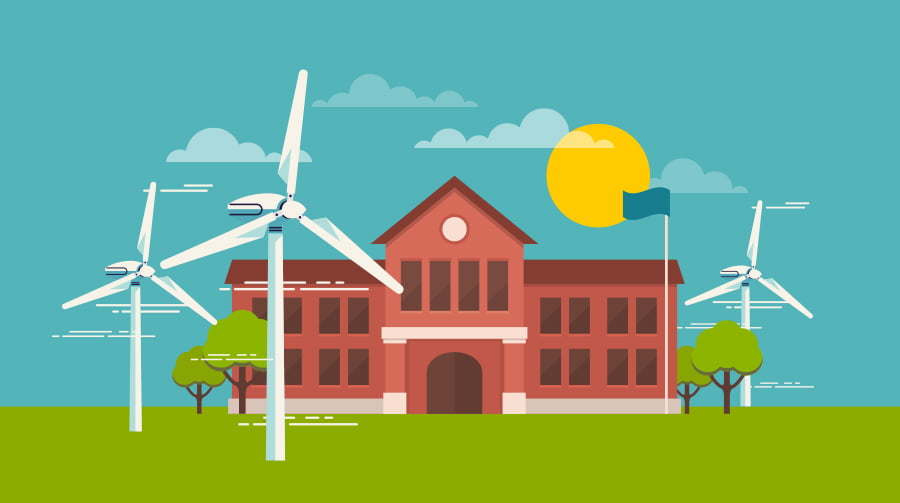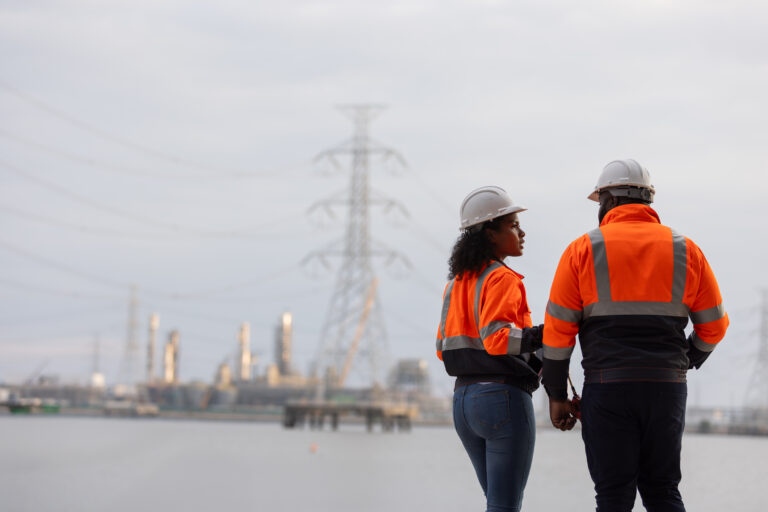Educational institutes need to have a particular focus on green energy sources and their benefits because this is where students are most likely to learn about sustainability and environmental impact. But talking about the subject is only the first step – if the next generation is going to believe greener energy is the norm then schools need to start walking the walk as well as talking the talk. So how does the future of green energy fare for educational institutes?
Solar Power
Solar power is the favourite, go-to energy source to teach to younger students because it’s conceptually simple to explain: the sun’s rays hit panels that turn that energy into electrical power. Obviously, the technology isn’t that simple, but the premise is easy to absorb. Civilisations have been using solar power for thousands of years, such as when ancient Tibet used a reflective sheet to boil a kettle. But the future of solar power looks like it could be much less cumbersome, with the notable technology of solar powered windows. These are very much what they sound like – windows that also absorb solar energy. So it would seem like an obvious development into the future of schools, which would, in turn, create early expectations with students for other organisations (i.e. their future place of employment) to be using green energy. It could also save 30-40% on utility costs and blocks UV rays that can fade furniture and damage sensitive skin. So, solar energy could be the future for schools and educational institutes, right?
Not necessarily. Not only are solar panels generally more expensive than traditional energy, but they are also facing severe taxation as of this year. In a move that has baffled environmentalists, the 2017 budget announced an 800% tax increase for solar panels. This is impacting state schools, although private schools have been classed as exempt. The immediate future for solar windows in educational institutes isn’t looking too bright.
Wind Power
Wind power is growing, with a 40% rise in adoption in some areas of the world. In 2007, the EU predicted wind energy would account for 13% of its energy consumption by 2020. The UK is one of the spearheads for offshore wind power, so there’s no reason this power could not be harnessed for schools.
Wind-powered schools seem to be becoming increasingly possible with the expansion of wind farms offshore, although a school completely powered by its own wind turbine isn’t likely yet! Ignoring the issue of it being perceived as an eyesore, it would also be incredibly expensive and relatively unreliable. But having wind power as part of a school’s core energy provision is far from a futuristic ideal, as many educational institutes are adopting technology such as vertical axis turbines to subsidise their power usage.
New turbine technologies are being developed all the time, so there’s no reason to think a wind-powered school or even a wind-powered university is out of the question. With many people looking to wind power as the next primary renewable energy source, we can expect to see many new designs and applications in the coming years. If it can become cheaper, wind power might be a viable option to power all schools and educational institutes, but we’re a few wind farms off, yet.
Ground source heat pumps
Heating accounts for a large proportion of an educational institute’s power consumption, but Ground Source Heat Pumps (GSHPs) can make that energy consumption less damaging to the environment. They work by pumping water deep into the earth where it is heated and pumped back into the GSHP. The water is then further heated by a compressor unit and pumped into the building’s heating system.
While this is a renewable source of energy (the Earth itself), it still isn’t 100% CO2 free – the compressor still needs some electricity to operate, but it uses significantly less than other heating methods.
It’s worth noting, however, that GSHPs require a lot of invasive installation. The machines are large, with a majority of their mass being underground. They also provide less heat than traditional heating methods, meaning they’re better suited to buildings with proper air conditions and no draughts. However, once a GSHP is set up, it requires very little maintenance and your heating is sourced without having to depend on external suppliers.
If you’re interested in assessing your facility’s capacity to utilise any of these techniques, you can rely on Zenergi to deliver expert, specialised energy solutions for your school or university. If you’re interested in hearing more, contact us; we look forward to hearing from you!
















